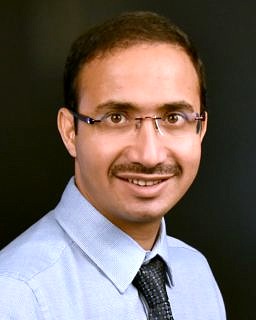Follow-up conversation with Prof. Dr. Mohammad Javed Ali

Gastprofessor am Lehrstuhl für Anatomie II
Dr Mohammad Javed Ali is a globally known name in the field of Dacryology, the science that deals with the tear ducts and tears drainage. He heads the Govindram Seksaria Institute of Dacryology at the renowned L.V. Prasad Eye Institute in India.
As Ophthalmology clinician, he is among the rare recipients of the “Experienced Alexander von Humboldt Research Fellowship”. We talked to Dr. Ali in March 2018 about his research stay at FAU in the frame of the Fellowship. In October 2019, Prof. Dr. Ali is again at FAU, this time as a visiting professor. We met with him to find out how he has done since the last interview.
Prof. Dr. Ali, when we talked to you in March 2018, you and your research group were working on unravelling the multifactorial etiopathogenesis of lacrimal drainage obstructions. Back then, work on the hormonal profiling of tear ducts began. Has the profiling already led to results?
Hello and thank you for having me again! A lot has happened for the better since the last interview 18 months ago. I have bonded more with Prof. Dr. Friedrich Paulsen, who is more like a close friend now and have also completed my tenure as the Humboldt Scientist at FAU.
Yes, we did complete the hormonal profiling of the tear ducts and what came out subsequently baffled us. Prolactin and its receptors could be playing a lead role in the etiopathogenesis of primary acquired nasolacrimal duct obstructions. We are currently thinking of newer modalities to go behind pinning prolactin as one of the culprits in this multifactorial disorder and possibly decoding its background communications with the other presumed dirty players!
What are further important results of your research at FAU to date?
Apart from the hormonal profiling of the lacrimal drainage system, three major areas had significant results.
Firstly, we at Anatomie II decoded the etiopathogenesis of dacryolithiasis or formation of mucopeptide concretions within the lacrimal drainage. We found out that everything begins with a clot of blood acting as a nidus and how mucopeptides are subsequently laid in concentric fashion to form the concretions.
Secondly, our group here led by Friedrich Paulsen demonstrated the presence of an intrinsic cholinergic activity within the lacrimal drainage system which can have a potential in decoding many disorders afflicting this area.
Thirdly, another major finding was the discovery of surfactants within the human canaliculus and we proposed theories linking them to tear flow dynamic and canalicular defence mechanisms. Our group also demonstrated dysfunctional surfactant expressions in cases of primary acquired nasolacrimal duct obstruction.
What are the next steps in your research project at FAU?
It’s nice and encouraging to be back as a visiting professor and we are currently working on understanding the physiological mechanisms behind the tear drainage process. As a first step, we are analysing 3-dimensional reconstructed models of the lacrimal canaliculi and the musculature surrounding it. We may also use this technology to study both canalicular and mucopeptide concretions and see them in a new light like never before.
Thank you for the interview, Prof. Dr. Ali.
Thank you for having me again!